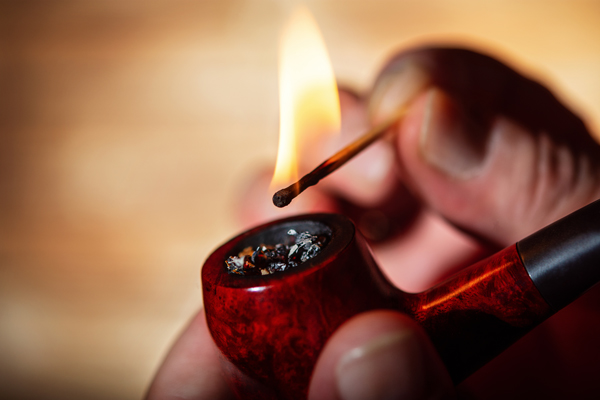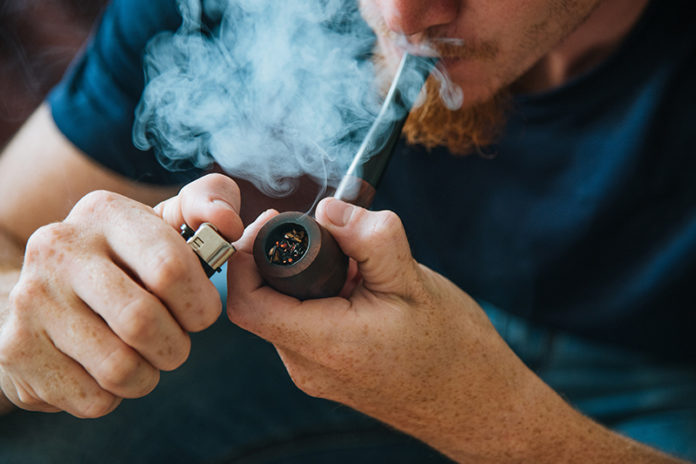In today’s market, there’s always an ebb and flow action taking place, where popular products may see a decline for a period of time only to be revived and made popular once again. This has also been true for the gaming industry, with old franchises given new life as consoles improve; in fashion, with “retro” clothing coming back in style; and in music, with the resurgence of vinyl records and cassette tapes. This is also true for the tobacco industry, with pipes and pipe tobacco.
“What is old today will become new again,” says Jorge Armenteros, founder of Tobacconist University (TU). “There is always a market for pipes and pipe tobaccos, so those that commit to the market will profit from it. I actually think that the rarity of the market makes it a valuable niche worth serving.”
Tobacconists who are looking to add to their store’s bottom lines and are in search of the next best thing should consider looking into the past and reconsider the place pipes and pipe tobaccos have in their stores. A pipe is a very personal item that a smoker will spend many hours using, interacting and connecting with. Pipe smokers will spend much of their time holding their pipes, smoking their pipes, admiring each pipe’s unique aesthetic and function, and all of this makes the experience of smoking a pipe completely different from that of smoking a cigar or any other combustible tobacco product. Pipes can also be an expensive investment, offering additional margins for retailers but also calling for additional considerations in order to encourage a store’s customer base to make a transaction.
In the interview that follows, Armenteros delves into the ins and outs of pipes and pipe tobacco, giving tobacconists some insights into this niche but highly profitable segment of the premium tobacco industry and offering tips for how you can maximize the potential of pipes in your community.
 Tobacco Business: Many tobacconists today are exclusively selling cigars. Why are pipes and pipe tobaccos important and relevant to the 21st century tobacconist?
Tobacco Business: Many tobacconists today are exclusively selling cigars. Why are pipes and pipe tobaccos important and relevant to the 21st century tobacconist?
Jorge Armenteros: Well, from a business perspective, every sale and customer is important, so more is better. We estimate that pipes and tobaccos comprise approximately 5 percent of the luxury tobacco market, meaning many stores are failing to enter that market segment. On the upside, those that do sell pipes and tobaccos gain a larger share of the market since there are fewer competitors. Furthermore, at TU we take pride in the word “tobacconist,” defining it as an expert dealer in tobacco and the related accoutrements; this necessarily includes pipes and tobaccos.
How do pipe tobacco customers typically differ from cigar customers?
Pipes and pipe tobaccos and cigars are totally different forms of tobacco, grown differently, processed differently and consumed differently, so the customers—you guessed it—are very different. But there are similarities, such as a passion for tobacco, relaxation, and a love of the tastes and aromas provided by luxury tobacco.
Pipes are an accoutrement, so they must be maintained and cared for. Also, there are many varieties of pipes suitable for different occasions and preferences. Similarly, pipe tobaccos run the gamut from smooth and sweet to robust, leathery and rustic. One of the most interesting differences between cigar and pipe customers is that pipe customers must invest in a pipe, and a great pipe can last a lifetime. So, pipe customers tend to spend a lot of time scrutinizing pipes before they purchase. It is not uncommon for customers to spend over an hour looking at pipes, analyzing them, feeling them, and then either buying them or deciding not to. Pipe customers need time and space to shop.
What are the different types of pipes available?
The three main types of pipes—in descending order of popularity—are briar, meerschaum and corncob. There are also novelty pipes made of gourds, and “pocket pipes” that fold into a compact size, among other unique features. Churchwarden pipes, with long stems, become popular when Lord of The Rings movies are playing, so there are also trends to be followed. Some of the most popular shapes are apple, billiard, bulldog, Dublin, poker and pot—and these can come in varying sizes with different shank shapes and different stem materials. You can get a strong fundamental education on pipes in TU’s Accoutrements College. Once you have learned the fundamentals, it’s a good idea to ask your vendor questions about what sells and their unique product features.
Most of these pipes are handcrafted by artisans around the world. How can retailers find actual pipes to bring into their store?
One of the most efficient ways to get started in the pipe business is to order from a reputable distributor who has multiple lines of pipes and tobaccos. A company like Laudisi Distributors has excellent briar pipe brands like Peterson and Savinelli. These “old-world” or more established brands will cover the middle to high ground and offer a great variety of quality and price. They also offer pipe tobaccos like Cornell & Diehl, G.L. Pease and Gawith Hogarth & Co., which make great boutique pipe blends, many of which come in tins or individually packaged bags. The folks at Laudisi are knowledgeable and can help answer any questions you have about the brands. They are committed to the pipe and tobacco industry.
If you are interested in selling bulk tobaccos and packaging smaller bags in your store, you can look to a company like Phillips & King, who has an extensive selection of bulk tobaccos covering the quality and price spectrum. Keep in mind, if you are packaging and selling bulk tobaccos, you will need a scale, and your state or municipality will probably require it to be registered and tested. You will also need smaller bags, labels and jars to house the tobacco. This is enough to get you started, but if you want to get into meerschaum pipes, you may want to find a specialist like Paykoc Imports. They import a tremendous amount of meerschaum pipes in every imaginable size, shape, carving and so on. The best way to buy meerschaums, or any pipe for that matter, is to hand-select what you want at a trade show, but in lieu of that, all pipe vendors will work with you over the phone. Pipe makers, vendors and importers tend to be very passionate and committed to their products, so developing a good relationship goes a long way. I would say that you also must have a robust selection of “basket” pipes. These are lower-grade pipes that get the job done at a lower cost. Most importantly, you can squeeze out a little extra margin on basket pipes, and they make a great first sale to a curious cigar smoker who wants to give a pipe a try.
Lastly, don’t forget to stock tampers, knockers, ashtrays, pipe stands and the other assorted accoutrements. The best part of these items is that they are relatively inexpensive, and you can make a little extra margin on them.
Over time, once you have your core brands and inventory established, you can venture out, study other pipe makers and brands, ask companies to send you tobacco samples, and round out and evolve your inventory as you please. Starting with a strong and credible inventory will create opportunities for dialogue with knowledgeable customers who will also teach you about the products and compel you to bring in new items.








